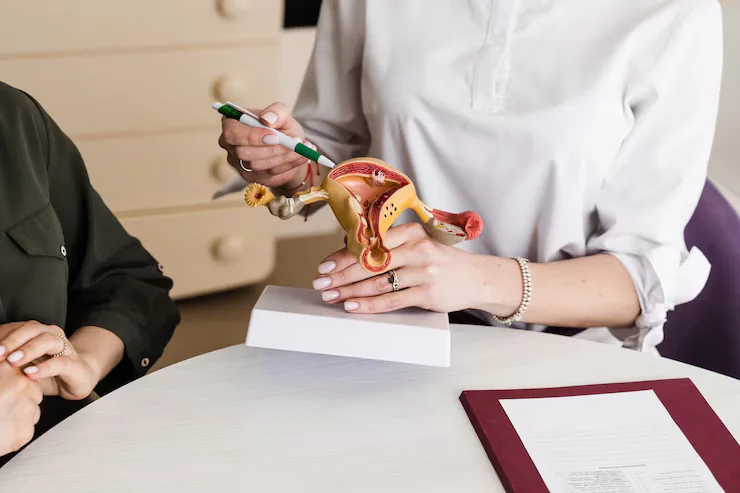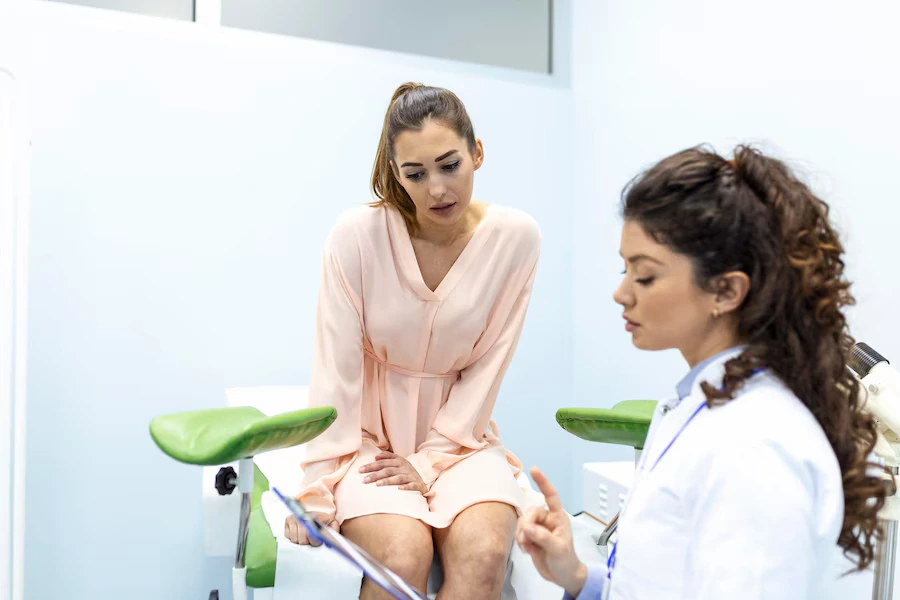-
Ganesh Talkies, Kolkata
Ganesh Talkies, Kolkata

Hello Reader!
Welcome to the blog page of Dr. Megha Khanna one of the best lady gynaecologist in Kolkata.
As one of the most effective procedures in modern gynecology, Hysteroscopic Polypectomy surgery is revolutionizing the way we treat uterine polyps. This minimally invasive procedure is highly recommended for women experiencing issues such as irregular bleeding, infertility, or pelvic discomfort caused by polyps in the uterus. As the best lady gynecologist in Kolkata, Dr. Megha Khanna provides a comprehensive guide to help you understand this procedure, its indications, the recovery process, and necessary lifestyle changes.

Hysteroscopic Polypectomy is a surgical procedure used to remove polyps from the uterus. Polyps are small, benign growths that develop on the inner lining of the uterus (endometrium). These growths can cause a range of symptoms, including abnormal uterine bleeding, difficulty conceiving, and menstrual irregularities.
The procedure involves the use of a hysteroscope, a thin, lighted tube inserted into the uterus through the cervix. This allows the surgeon to visualize the uterine cavity and safely remove the polyps without any external incisions. Hysteroscopic Polypectomy surgery is performed under general or local anesthesia and is generally an outpatient procedure.
Hysteroscopic Polypectomy is recommended for various conditions, including:
If you experience any of these symptoms, consult the best lady gynecologist in Kolkata for a thorough diagnosis and treatment plan.
Hysteroscopic Polypectomy is a simple yet precise procedure. Here’s what you can expect:
The recovery process is typically quick, but proper care is essential to ensure optimal healing:
Adopting certain lifestyle changes can enhance recovery and prevent recurrence:

Hysteroscopic polypectomy is a surgical procedure used to remove uterine polyps, which are benign growths on the inner lining of the uterus. Understanding the symptoms that indicate the need for this procedure is crucial for timely intervention and effective treatment. Here are the most common symptoms that suggest a woman may benefit from hysteroscopic polypectomy:
One of the primary indications for hysteroscopic polypectomy is abnormal uterine bleeding. This can manifest as:
Heavy Menstrual Periods: Experiencing unusually heavy bleeding during menstrual cycles can be a sign of polyps.
Irregular Bleeding: Bleeding between periods or spotting can indicate the presence of uterine polyps.
Post-Menopausal Bleeding: Any bleeding after menopause should be evaluated, as it may suggest underlying issues, including polyps.
Uterine polyps can interfere with implantation and contribute to fertility issues. Women who have been trying to conceive without success may be recommended for hysteroscopic polypectomy to remove any obstructive growths that could hinder pregnancy.
While not all women with polyps experience pain, some may report chronic pelvic pain or discomfort. If this pain is persistent and unexplained, it could be related to the presence of uterine polyps.
Large polyps can create a sensation of pressure in the pelvic area or affect surrounding organs, leading to discomfort or urinary symptoms. If you experience persistent pressure or discomfort, it may warrant further investigation.
Women who have experienced multiple miscarriages may have underlying uterine abnormalities, including polyps. Hysteroscopic polypectomy can help address these issues, potentially improving the chances of a successful pregnancy in subsequent attempts.

After undergoing hysteroscopic polypectomy, making certain lifestyle changes can significantly enhance recovery and promote overall health. Here are some recommended lifestyle adjustments to consider post-surgery:
Also Read: Healing After Hysterectomy: Comparing Recovery for Laparoscopic and Abdominal Procedures

Yes, hysteroscopic polypectomy can significantly help with infertility issues. This procedure involves the removal of uterine polyps, which are non-cancerous growths that can interfere with a woman’s ability to conceive. Here are the key points regarding how hysteroscopic polypectomy can impact fertility:
Studies have shown that women who undergo hysteroscopic polypectomy often experience improved pregnancy rates. For instance, one study found that after the procedure, 72.5% of women had a positive pregnancy result, indicating a significant increase in clinical pregnancies compared to their status before surgery. Another research highlighted that spontaneous pregnancy and delivery rates increased to 61.4% and 54.2%, respectively, after polypectomy.
Uterine polyps can obstruct the implantation of embryos during assisted reproductive techniques like IVF. If an embryo implants on a polyp instead of the uterine lining, it may not receive adequate blood supply, leading to recurrent pregnancy loss 5. By removing these polyps through hysteroscopic polypectomy, the uterine environment is optimized for implantation.
Many women with uterine polyps experience abnormal bleeding patterns, which can complicate conception efforts. Following hysteroscopic polypectomy, menstrual cycles often normalize, making it easier for women to track ovulation and plan for conception.
Hysteroscopic polypectomy is considered a safe and minimally invasive procedure with a low complication rate (approximately 2.4%). The procedure allows for direct visualization and removal of polyps, restoring the integrity of the uterine cavity in one session.

After undergoing hysteroscopic polypectomy, engaging in specific exercises can aid in recovery and help restore strength and mobility. Here are some recommended exercises that are safe and beneficial during the post-operative recovery period:
For women undergoing IVF, performing a hysteroscopic polypectomy before treatment is often recommended. This pre-treatment step ensures that any potential barriers to successful implantation are addressed, thereby enhancing the overall chances of a successful pregnancy.
Dr. Megha Khanna, recognized as the best lady gynecologist in Kolkata, specializes in performing Hysteroscopic Polypectomy surgery with utmost precision and care. Her extensive experience and patient-centric approach ensure successful outcomes and a comfortable recovery journey.

Hysteroscopic Polypectomy surgery is a minimally invasive procedure used to remove benign growths (polyps) from the inner lining of the uterus using a hysteroscope.
Women experiencing abnormal uterine bleeding, infertility, postmenopausal bleeding, or recurrent miscarriages should consult a gynecologist to evaluate the need for this surgery.
Most patients recover within a few days, although light spotting and mild cramping may persist briefly. Strenuous activities should be avoided for at least 48 hours.
Yes, maintaining a healthy diet, engaging in regular light exercise, managing stress, and attending regular gynecological check-ups are essential for long-term recovery and health.
Dr. Megha Khanna is recognized as the best lady gynecologist in Kolkata for her expertise in performing Hysteroscopic Polypectomy surgery with precision and personalized care.
Hysteroscopic Polypectomy surgery is a safe, effective, and minimally invasive solution for uterine polyps. Understanding the procedure, its indications, and post-surgery care can help you make informed decisions about your health. If you are experiencing symptoms related to uterine polyps, don’t hesitate to consult Dr. Megha Khanna for expert advice and treatment.
Your journey to better health begins with the right care and guidance. Contact Dr. Megha Khanna today to learn more about Hysteroscopic Polypectomy and reclaim your well-being.